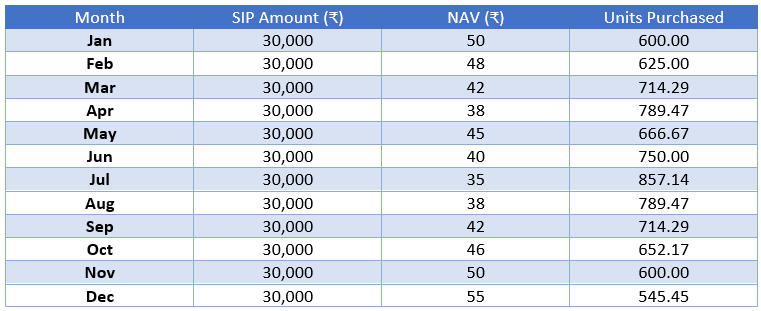How SIPs Work in Volatile Markets?
By Akhil Chugh
Date February 23, 2025
The Indian stock market has been experiencing prolonged volatility, with negative returns stretching over several months. This has left many investors questioning whether they should pause their Systematic Investment Plans (SIPs).
SIPs are a popular investment tool, allowing investors to invest small amounts regularly in mutual funds. This can be the golden time to continue your SIPs or rather increase them for long-term investors. They are designed to benefit from market fluctuations through rupee cost averaging. However, when markets remain volatile for extended periods, investors often grow anxious.
The good news is that SIPs are structured to thrive in volatile markets by leveraging the concept of rupee cost averaging. In this blog, we will explore how SIPs function during market fluctuations.

Understanding SIPs in Volatile Markets
SIPs allow investors to invest a fixed amount of money in mutual funds at regular intervals (monthly, quarterly, etc.). Instead of worrying about market ups and downs, investors benefit from averaging out their purchase cost over time.
Rupee Cost Averaging: Your Best Friend in Volatility
Market volatility leads to fluctuations in mutual fund NAVs. When markets are down, your SIP buys more units; when markets are high, it buys fewer. Over time, this smooths out the cost per unit and reduces the risk of making poor investment decisions based on short-term market movements.
Let’s illustrate this with an example.
Example: How SIPs Benefit from Volatility
Assume you invest ₹30,000 per month in a mutual fund through SIP. The table below shows how NAV changes over a year affect the number of units purchased:

Total Investment: ₹3,60,000
Total Units Acquired: 8,303.94
Average Cost per Unit: ₹43.35 (instead of highest NAV of 55)
Even though the NAV fluctuated significantly, rupee cost averaging ensured that the average cost per unit was lower than the highest price during the period. This is how SIPs help investors navigate volatility efficiently.
This example reflects a scenario similar to historical fluctuations in the Indian stock market, such as the corrections seen during economic slowdowns and recoveries. For instance, during the COVID-19 crash in 2020, NAVs of many mutual funds dipped significantly, but investors who continued their SIPs benefited immensely during the subsequent market rally.
Long-term investors in equity mutual funds tracking indices like Nifty 50 and Sensex have historically experienced strong returns despite market volatility. For example, SIPs in large-cap funds such as HDFC Top 100 Fund or ICICI Prudential Bluechip Fund have generated substantial wealth over the years, proving the importance of staying invested through market cycles.
Net Brokers Takeaways:
Volatile markets can be unsettling, but SIPs turn volatility into an advantage through rupee cost averaging. Instead of fearing market fluctuations, investors should embrace SIPs for steady wealth creation.
Pro Tip: Stay consistent with your SIPs, avoid reacting to short-term volatility, and watch your wealth grow over time.
Do you have questions about SIP investments? Feel free to get in touch with us.
Stay Invested, Stay Disciplined!



